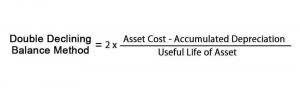Content

Determining the capitalized cost of an intangible asset (the numerator in this equation) can be the trickiest part of the calculation. In the example above, the loan is paid on a monthly basis over ten years. Negative amortization can occur if the payments fail to match the interest.
What is simple vs amortization?
While a simple interest loan requires paying the same amount towards the principal and interest at each payment, an amortized loan makes it so that you would pay more towards the principal and less towards the interest with each subsequent payment.
Amortization reduces your taxable income throughout an asset’s lifespan. A company’s intangible assets are disclosed in the long-term asset section of its balance sheet, while amortization expenses are listed on the income statement, or P&L. Amortization is a technique of gradually reducing an account balance over time. When amortizing loans, a gradually escalating portion of the monthly debt payment is applied to the principal. When amortizing intangible assets, amortization is similar to depreciation, where a fixed percentage of an asset’s book value is reduced each month. This technique is used to reflect how the benefit of an asset is received by a company over time.
Why is amortization in accounting important?
He is the sole author of all the materials on AccountingCoach.com. Amortization is a fundamental concept of accounting; learn more with our Free Accounting Fundamentals Course. Encyclopaedia Britannica’s editors oversee subject areas in which they have extensive knowledge, whether from years of experience gained by working on that content or via study for an advanced degree. They write new content and verify and edit content received from contributors.
- This can be useful for purposes such as deducting interest payments for tax purposes.
- The method of amortization should be based upon the pattern in which the economic benefits are used up or consumed.
- Loans are also amortized because the original asset value holds little value in consideration for a financial statement.
- Amortization and depreciation are the two main methods of calculating the value of these assets, with the key difference between the two methods involving the type of asset being expensed.
- You pay installments using a fixed amortization schedule throughout a designated period.
- Subsequently, we use the remaining part to reduce the outstanding principal.
In general, the word amortization means to systematically reduce a balance over time. In accounting, amortization is conceptually similar to the depreciation of a plant asset or the depletion of a natural resource. Entrepreneurs often incur startup costs to https://www.bookstime.com/articles/amortization-accounting organize a business before it begins operating. These startup costs may include legal and consulting fees as well as marketing expenses and are an example of an area where there’s a significant difference between book amortization and tax amortization.
Global E-Invoicing and Payment Software
This method spreads the cost of the intangible asset evenly over all the accounting periods that will benefit from it. Amortizing intangible assets is crucial because it may lower a company’s taxable income and, thus, its tax bill while providing investors with a clearer picture of the business’s actual profitability. Generally speaking, there is accounting guidance via GAAP on how to treat different types of assets. Accounting rules stipulate that physical, tangible assets (with exceptions for non-depreciable assets) are to be depreciated, while intangible assets are amortized. A loan doesn’t deteriorate in value or become worn down over use like physical assets do.
As time progresses, more of each payment made goes toward the principal balance of the loan, meaning less and less goes toward interest. The amortization of a loan is the process to pay back, in full, over time the outstanding balance. In most cases, when a loan is given, a series of fixed payments is established at the outset, and the individual who receives the loan is responsible for meeting each of the payments. Amortization refers to the process of paying off a debt through scheduled, pre-determined installments that include principal and interest.
Table of Contents
Amortizing an expense is useful in determining the true benefit of a large expense as it generates revenue over time. The amounts of each increment of a spread-out expense as reported on a company’s financials define amortization expenses. Amortization practices reflect a more accurate cost of doing business in a company’s financial reporting, as the benefits of an initial expense may continue long after the initial report of that expense. Financial assets which meet the criteria and definition of amortized costs such as a bond, which carries a cash flow stream defined by their coupon rate. But over the bond’s term period, the interest rate can differ as the market differs.

The value ‘P’ represents the period in months when you repay the loan. If you make an expense that’s not included in your balance sheet, it will be trouble later during reconciliation. While matching your bank statement with balance sheets, you will find discrepancies. For example, your company has an intellectual property of $50,000 in value. Amortization, in general, is writing off a part of its value every year. Amortization and depreciation are similar in that they both support the GAAP matching principle of recognizing expenses in the same period as the revenue they help generate.
Free Accounting Courses
It can be presented either as a table or in graphical form as a chart. A broader amortization definition includes the process of gradually paying off a debt over a set amount of time and in fixed increments, commonly seen in home mortgages and auto loans. By accounting for your amortization costs, you can reduce tax liabilities.
Amortization can refer to the process of paying off debt over time in regular installments of interest and principal sufficient to repay the loan in full by its maturity date. Loan amortization is when you split a loan repayment into fixed dues spread over the tenure. If the repayment period is five years, then you will pay $1M each year. Summing it up, you will pay $105,000 every year to amortize the loan. There is a mathematical formula to calculate amortization in accounting to add to the projected expenses. An agile finance team will be prepared not just for current expenses but for the future too.
Autonomous Accounting
In other words, it means to expense the intangible asset’s cost over its estimated lifetime. Intangible assets can be patents, copyrights, intellectual property, etc. Depreciation is levied on tangible assets, whereas amortization applies to intangible assets. For this article, we’re focusing on amortization as it relates to accounting and expense management in business. In this usage, amortization is similar in concept to depreciation, the analogous accounting process. Depreciation is used for fixed tangible assets such as machinery, while amortization is applied to intangible assets, such as copyrights, patents and customer lists.

The difference is depreciated evenly over the years of the expected life of the asset. In other words, the depreciated amount expensed in each year is a tax deduction for the company until the useful life of the asset has expired. Amortization is an accounting technique used to periodically lower the book value of a loan or an intangible asset over a set period of time. Concerning a loan, amortization focuses on spreading out loan payments over time.
Amortization in Business
Assets that are expensed using the amortization method typically don’t have any resale or salvage value. They also want to reduce their tax liability and increase their retained earnings. That is only possible if you count every single expense, direct or indirect. Once you subtract the expenses and discounts from your revenue, you get the net revenue.
Accordingly, Sage does not provide advice per the information included. These articles and related content is not a substitute for the guidance of a lawyer (and especially for questions related to GDPR), tax, or compliance professional. When in doubt, please consult your lawyer tax, or compliance professional for counsel. Sage makes no representations or warranties of any kind, express or implied, about the completeness or accuracy of this article and related content. The above figures are a little daunting if you look at them as is, so here is an example to demonstrate it.
What are Plant Assets? – Financial Accounting
An amortization table provides you with the principal and interest of each payment. With the above information, use the amortization expense formula to find the journal entry amount. Residual value is the amount the asset will be worth after you’re done using it. The term amortization is used in both accounting and in lending with completely different definitions and uses. Salvage value – If the asset has any monetary value after its useful life. So, for example, the brand value of a company logo or mascot may be amortized, while the resale price of their manufacturing machines may depreciate.
How is amortization calculated?
To calculate amortization, first multiply your principal balance by your interest rate. Next, divide that by 12 months to know your interest fee for your current month. Finally, subtract that interest fee from your total monthly payment. What remains is how much will go toward principal for that month.
We use amortization tables to represent the composition of periodic payments between interest charges and principal repayments. An example of the first meaning is a mortgage on a home, which may be repaid in monthly installments that include interest and a gradual reduction of the principal obligation. Such systematic annual reduction increases the safety factor https://www.bookstime.com/ for the lender by imposing a small annual burden rather than a single, large, final obligation. A design patent has a 14-year lifespan from the date it is granted. Negative amortization is when the size of a debt increases with each payment, even if you pay on time. This happens because the interest on the loan is greater than the amount of each payment.